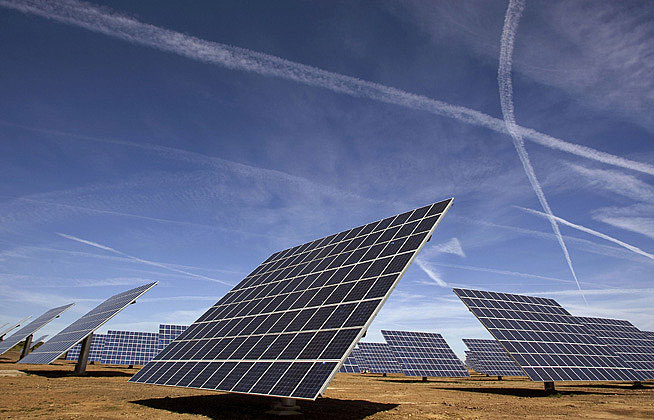Solar energy responds well to cooling needs
According to a reporter at the United Nations, on July 9, the International Energy Agency (IEA) predicted that by 2050, solar energy could meet 16% of global demand for heat and cooling.
Investing in the development of solar heating and cooling technologies can avoid 800 megawatts of carbon dioxide (CO 2 ) emissions per year by 2050, equivalent to the total amount of German CO 2 emissions in 2009. .
The IEA provides a roadmap for solar heating and cooling (SHC), which defines the optimal ways to promote solar thermal and cooling technologies.

Technologies such as indoor heating technology with hot water virtually emit no greenhouse gas emissions.
While solar energy used for heat generation and cooling still accounts for a small portion of the world energy demand, the IEA's new roadmap emphasizes if governments and industries take specific, energetic actions. Solar energy can produce more than 16% of the total energy used annually to produce low temperatures and 17% of the total energy used for cooling worldwide. To achieve this goal, the world must increase 25 times the level of SHC technology deployment in the next 4 decades.
Global energy demand for heat generation accounts for about 50% of global energy use, more than global electricity and transport demand.
The use of solar energy for heating contributes to addressing both the major challenges of climate change and energy security.
In addition to replacing fossil fuels directly heated to generate heat, solar thermal technologies can replace electricity to heat water as well as heating buildings.
Solar thermal cooling technology can reduce the burden on national grid networks by completely or partially replacing electric-powered air-conditioning systems in buildings.
The solar energy development roadmap also expanded the scale of using these technologies in industry. Industrial processes promise huge potential for solar thermal heating technologies. These technologies can meet 20% of global industrial energy demand for low temperature heating by 2050.
However, the IEA emphasizes the need to support solar development with specific and realistic policies.
Countries need to create stable long-term policy frameworks to develop solar thermal and cooling technologies, promote economic incentives, eliminate obstacles such as lack of quality control standards. , providing finance and mechanisms to support research, development and deployment so that promising technologies in the early stages can achieve high commercial production scale within 10 years.
Donor organizations in developing countries also need to accelerate the deployment of mature and highly competitive SHC technologies.
- Most of the world's solar cells are installed in the wrong direction
- Technology to use solar energy at night
- Clean energy future for Cuba
- Cuba built many solar parks
- Future solar batteries will be placed in the universe
- Solar cells have many advantages so why is not yet widely used?
- New technology allows solar cells to be more colorful
- Australia-US increased solar energy research
- US-Australia increased cooperation on solar energy
- Single way to get solar energy from the moon
- Record of solar power efficiency
- The world's largest solar field in Australia is about to start
 Is the magnetic North Pole shift dangerous to humanity?
Is the magnetic North Pole shift dangerous to humanity? Washington legalizes the recycling of human bodies into fertilizer
Washington legalizes the recycling of human bodies into fertilizer Lightning stone - the mysterious guest
Lightning stone - the mysterious guest Stunned by the mysterious sunset, strange appearance
Stunned by the mysterious sunset, strange appearance Groundbreaking technology generates hundreds of megawatts of carbon-free electricity, US Department of Energy gives a boost
Groundbreaking technology generates hundreds of megawatts of carbon-free electricity, US Department of Energy gives a boost  New discovery about the huge energy source in cosmic rays
New discovery about the huge energy source in cosmic rays  Energy source from super hot 374 degree C rock underground
Energy source from super hot 374 degree C rock underground  What if we turned the Sahara desert into a solar 'battery'?
What if we turned the Sahara desert into a solar 'battery'?  World's largest CO2 heat pump can heat 25,000 homes
World's largest CO2 heat pump can heat 25,000 homes  New Zealand company moves closer to unlimited fusion energy
New Zealand company moves closer to unlimited fusion energy 